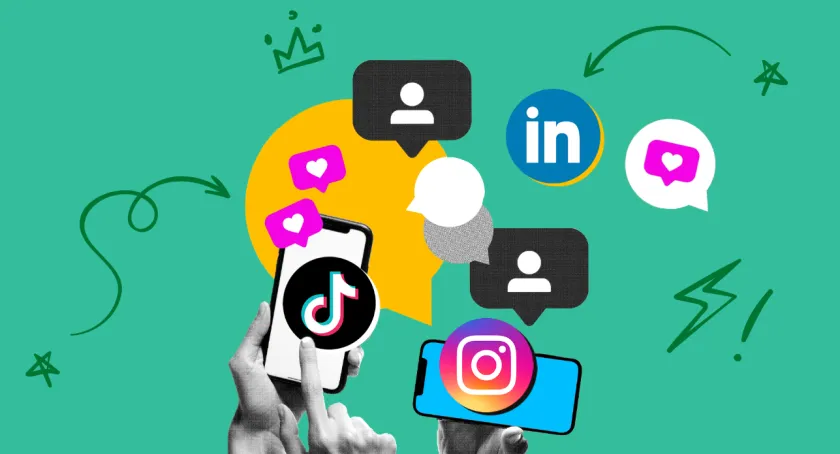You've launched your eCommerce store. Congrats! But now it feels like a ghost town, right? You aren't alone. Getting those first sales can be tough. The good news is there are easy ways to attract visitors and turn them into customers. This article will show you simple, effective traffic-driving strategies.
1. Social Media Marketing for eCommerce Beginners
Social media is vital for your new store. It's not just about posting; it's about connecting with people. Build a community, not just a following. Engagement creates relationships that lead to sales.

1.1. Choosing the Right Platforms
Don't spread yourself too thin. Where does your ideal customer hang out online? Is it Instagram, TikTok, or Facebook? Maybe it is Pinterest. Research the demographics of each platform. Tailor your content to fit each site. Know where they spend time. This will help you focus your efforts effectively.
1.2. Content Strategies for Engagement
Mix it up with your posts. Use eye-catching images. Create short, fun videos. Try interactive stories that grab attention. Plan your posts with a content calendar. Stay consistent and keep your audience interested. It's about being relevant and engaging.
1.3. Running Targeted Social Media Ads
Social media ads work! Target your ideal customer based on interests and location. Facebook and Instagram ads can be very effective. Set a budget you're comfortable with. Track how well your ads are doing. Refine your strategy as you learn.
2. Harnessing the Power of Influencer Partnerships
Influencers have the ear of your target audience. Working with them expands your reach and builds trust. People trust recommendations from people they like. A well-chosen influencer can drive traffic and sales.

2.1. Finding Relevant Influencers in Your Niche
Different influencers have different reach. Micro-influencers have smaller, engaged audiences. Macro-influencers have larger, less targeted reach. Find someone whose audience matches your ideal customer. Look for authenticity and engagement.
2.2. Crafting Mutually Beneficial Partnerships
Communicate clearly with influencers. Set expectations upfront. Offer them value in exchange for their promotion. This could be free products or a commission.
Here's an example: A small clothing store partnered with a fashion blogger. The blogger featured their clothes in a post. This drove a ton of traffic and sales, a real boost.
2.3. Tracking and Measuring Influencer Campaign Performance
Track how well each influencer performs. Use special links or promo codes. This helps you see which influencers send traffic and sales. Look at website traffic, conversions, and social engagement. Knowing what works helps refine future campaigns.
3. Driving Targeted Traffic with Google Ads
Google Ads puts your store in front of people searching for what you sell. It's a powerful way to drive targeted traffic. Search and display ads can work wonders. Be sure to use Google Shopping Ads.
3.1. Setting Up Your First Google Ads Campaign
Setting up Google Ads can seem daunting. Start with a clear account structure. Research relevant keywords using Google Keyword Planner. Target keywords with good search volume and low competition. This helps get your ads seen without breaking the bank.
3.2. Optimizing Your Ads for Conversions
Write clear, compelling ad copy. Use relevant keywords. Include a strong call to action. A/B test different ads to see what works best. Small changes can have a big impact.
3.3. Utilizing Google Shopping Ads
Google Shopping Ads display your products directly in search results. To be effective, ensure your product data is complete. Include high-quality images, descriptions, and pricing. Having this will help potential customers quickly see the value.
4. Content Marketing: Attracting Customers Through Valuable Content
Content marketing brings customers to you. Valuable content attracts, engages, and converts. Think blog posts, guides, and videos. It is helpful stuff your audience cares about.
4.1. Creating a Blog Strategy for eCommerce
Create a blog strategy that matches your products. Do keyword research. Find out what questions customers are asking. Plan your content with a calendar. Address customer pain points and offer solutions.
4.2. Optimizing Your Content for SEO
Optimize your content for search engines. Use keywords in your titles and descriptions. Make sure images have alt text. Write naturally, but be mindful of SEO. This makes it easier for customers to find you.
4.3. Promoting Your Content to Reach a Wider Audience
Share your content on social media. Email your list about new posts. Consider guest blogging on other sites. Repurpose content into different formats. Turn blog posts into videos or infographics.
5. Leveraging Email Marketing for eCommerce Growth
Email marketing isn't dead. It's still a powerful tool. Build an email list and nurture those leads. Drive sales through targeted email campaigns.
5.1. Building Your Email List
Offer something free in exchange for email sign-ups. This could be a discount or a free guide. Use pop-up forms on your website. Run contests to gather email addresses. Use an email marketing platform to manage your list.
5.2. Creating Effective Email Campaigns
Craft engaging email campaigns. Personalize your messages. Offer exclusive deals to subscribers. Segment your list for targeted emails. This ensures people get content relevant to them.
5.3. Automating Your Email Marketing
Automate your email marketing to save time. Welcome new subscribers with an automated series. Nurture leads with helpful content. Recover abandoned carts with reminder emails. Automation makes your marketing more efficient.
Conclusion
Driving traffic to a new eCommerce store takes time and effort. But it's doable with these strategies. Social media, influencers, Google Ads, and content marketing all work. It starts with consistent effort and smart choices. Now, go out there and start driving traffic to your store!